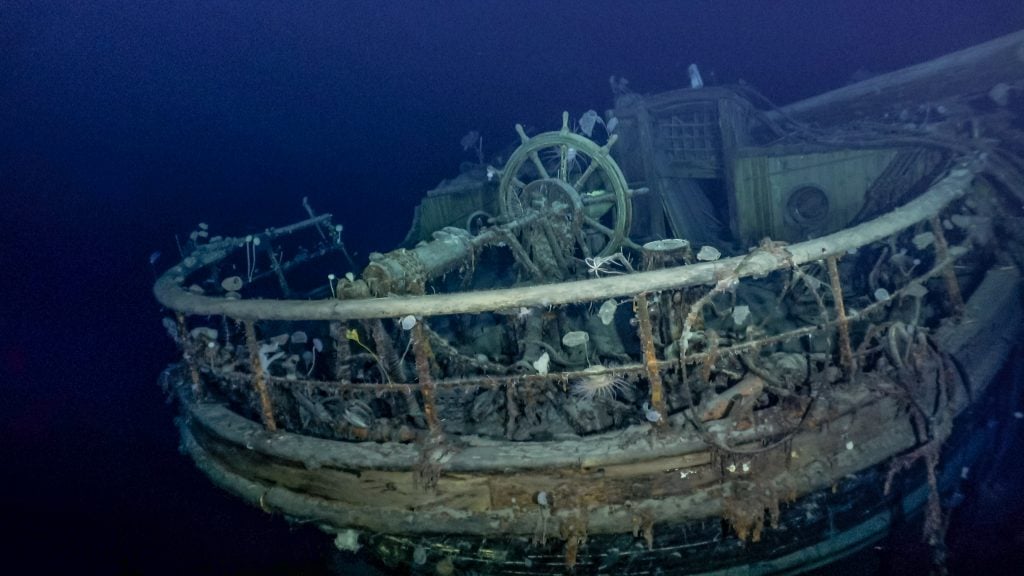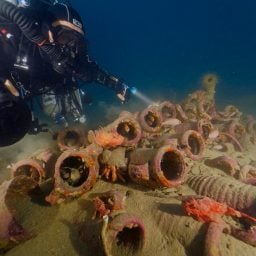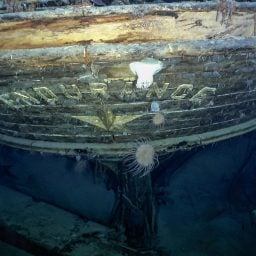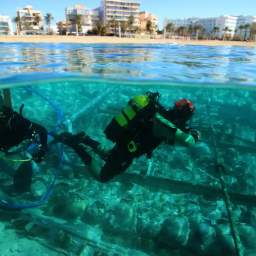Marine archaeologists have discovered the remains of the Endurance, one history’s most famous shipwrecks, submerged in the icy waters of the Weddell Sea, east of the Antarctic Peninsula.
Thanks to cold waters and the lack of wood-eating organisms in the Antarctic, it is in remarkable condition.
The 64-member Endurance22 search expedition spent the past two weeks painstakingly searching for the ship’s remains with undersea drones. Experts had narrowed the search to a 150-square-mile area surrounding the ship’s last-recorded location, and found it just four miles south of that point.
“We have made polar history with the discovery of Endurance, and successfully completed the world’s most challenging shipwreck search,” John Shears, the expedition’s leader, said in a statement.
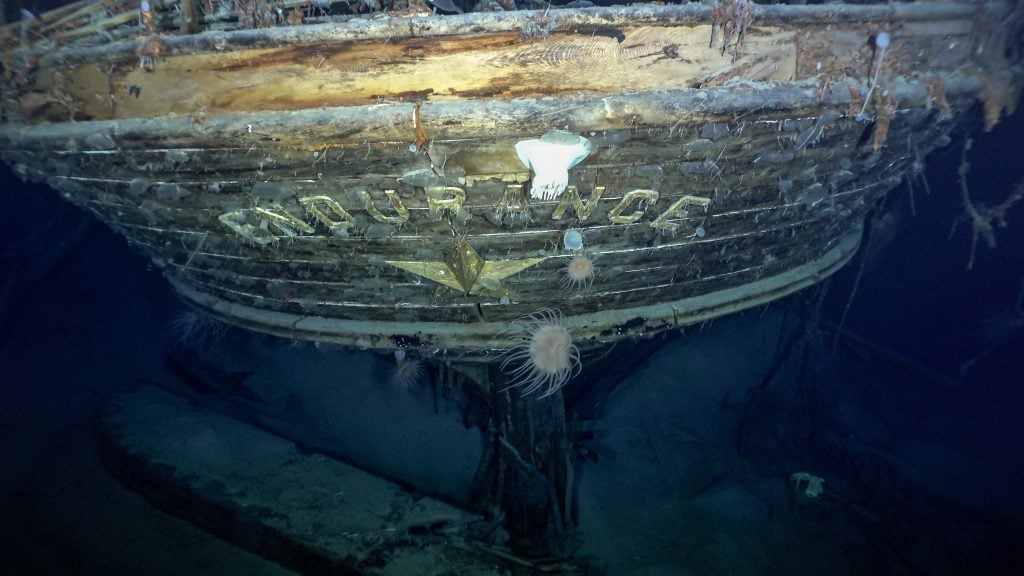
Stern of the Endurance with the name and emblematic polestar. Photo ©Falklands Maritime Heritage Trust/National Geographic.
Found sitting upright, the ship remains “in a brilliant state of preservation,” expedition director Mensun Bound added. “You can even see Endurance arced across the stern.”
But spotting the watery wreckage was challenge, given the freezing temperatures of some of the world’s iciest waters, not to mention the ocean’s depths—the ship was found nearly 10,000 feet below the surface, according to the New York Times.
“This has been the most complex subsea project ever undertaken, with several world records achieved to ensure the safe detection of Endurance,” Nico Vincent, the expedition’s subsea project manager, said.
The 144-foot-long wooden ship sank in 1915 during the British Imperial Trans-Antarctic Expedition led by explorer Ernest Shackleton. Its journey was cut short that January when it became trapped in pack ice.
With the Endurance unable to move, the 28-man crew was forced to abandon ship in October as the ice crushed the vessel, causing it to sink. The expedition spent the next five months camped on surrounding ice floes until the ice broke up, allowing them to sail three lifeboats to the uninhabited Elephant Island.
From there, Shackleton and five crew members successfully sailed one of the 22.5-foot vessels 800 miles on the open seas in a rescue mission to a settlement in South Georgia, making the perilous crossing in 17 days. Shackleton then crossed the mountainous island by foot to reach a whaling station.
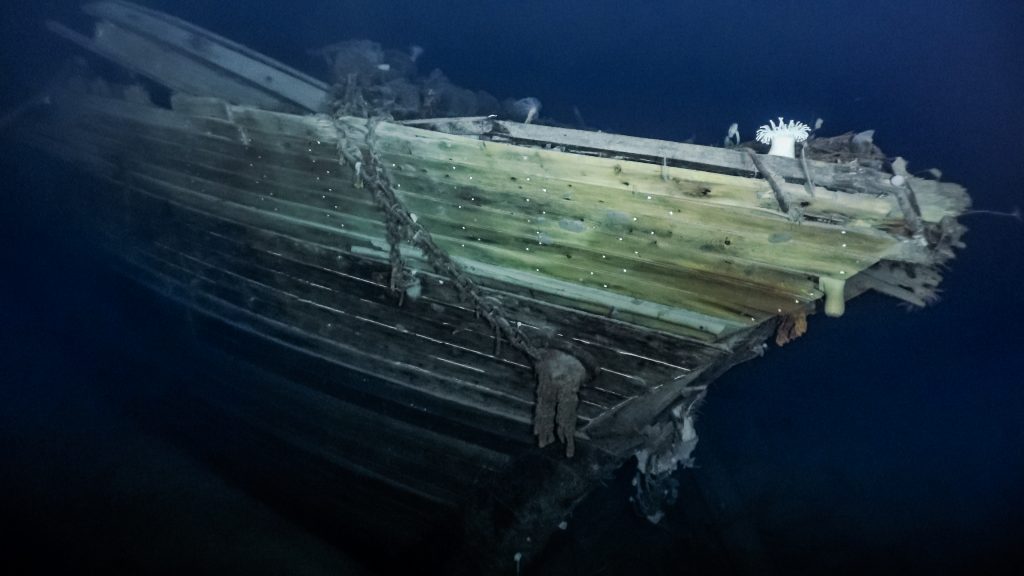
Starboard bow of the Endurance. Photo ©Falklands Maritime Heritage Trust/National Geographic.
Due to harrowing weather conditions, it took over three months and four attempts for Shackleton to return for the rest of the crew. Remarkably, the expedition suffered no casualties.
The $10 million search for the lost ship was funded by an anonymous donor and organized by the Falklands Maritime Heritage Trust. The expedition left Cape Town in early February aboard the Agulhas II, a South African icebreaker that itself was briefly trapped in ice, forcing operations to pause for a day. But the successful mission otherwise experienced only minor technical glitches with battery-powered submersibles.
The vessels scanned the ocean floor in twice-daily six-hour shifts, using sonar to identify raised areas of the seabed. After the wreck was detected, drones were equipped with high-resolution cameras and other instruments to document the discovery.
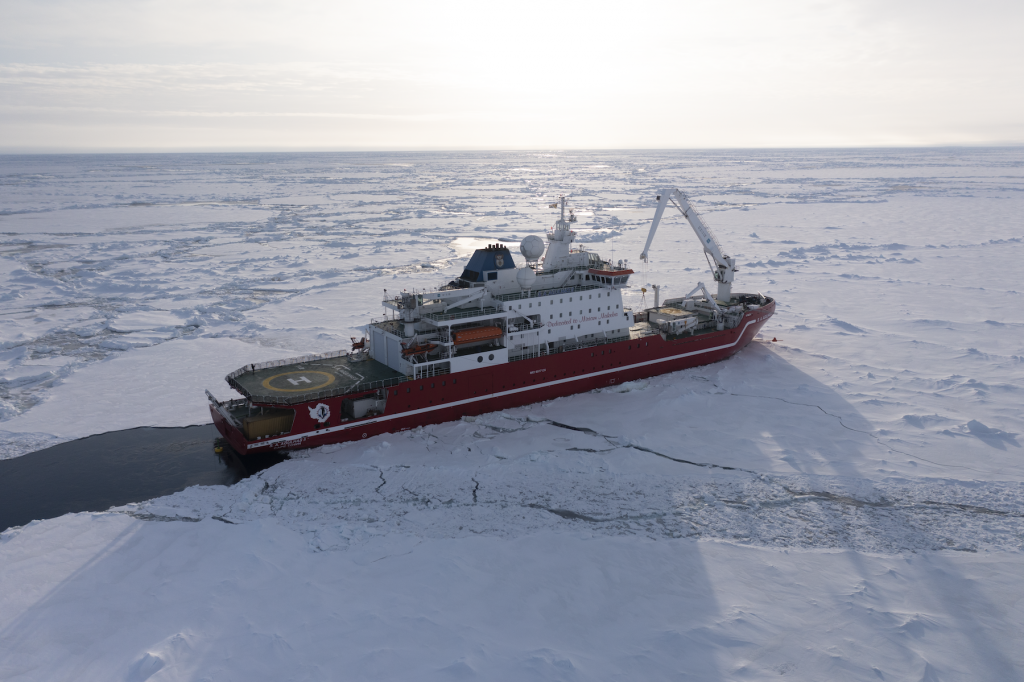
The Endurance22 mission took place aboard the Agulhas II, a South African icebreaker. Photo courtesy of Falklands Maritime Heritage Trust and James Blake.
The images the drones sent back were the first views of the ship since expedition photograph Frank Hurley captured shots of it sinking 107 years prior.
Because the Endurance is considered a historic monument under the terms of the Antarctic Treaty of 1959, the expedition left the wreck undisturbed. The team plans to use the footage, laser scans, and other data for museum exhibitions and a documentary.
The expedition also included ice scientists such as Stefanie Arndt of the Alfred Wegener Institute in Germany. Her team drilled 630 ice cores from 17 locations as part of efforts to more fully understand the effects of global warming on Antarctic sea ice.
